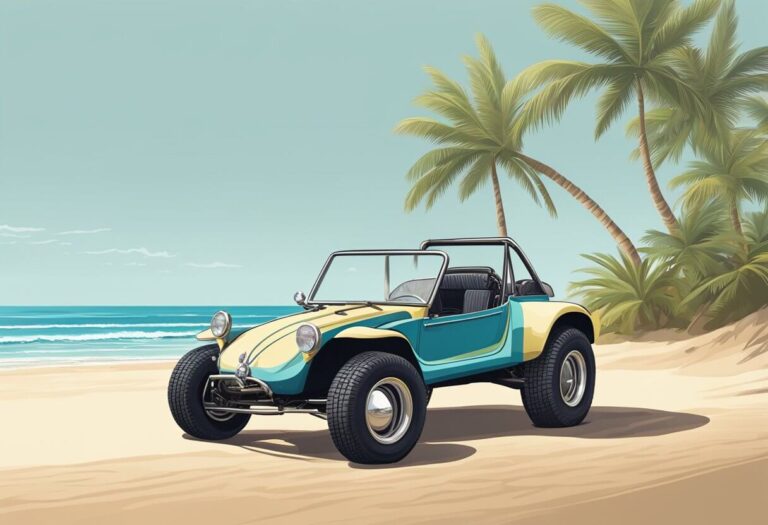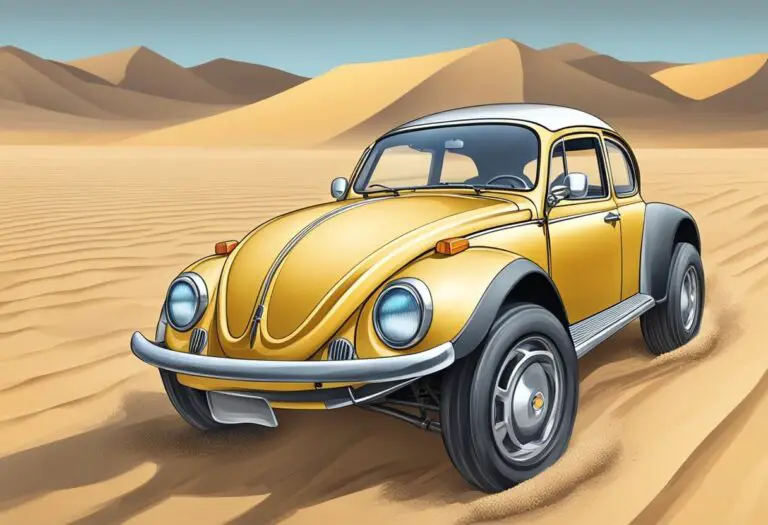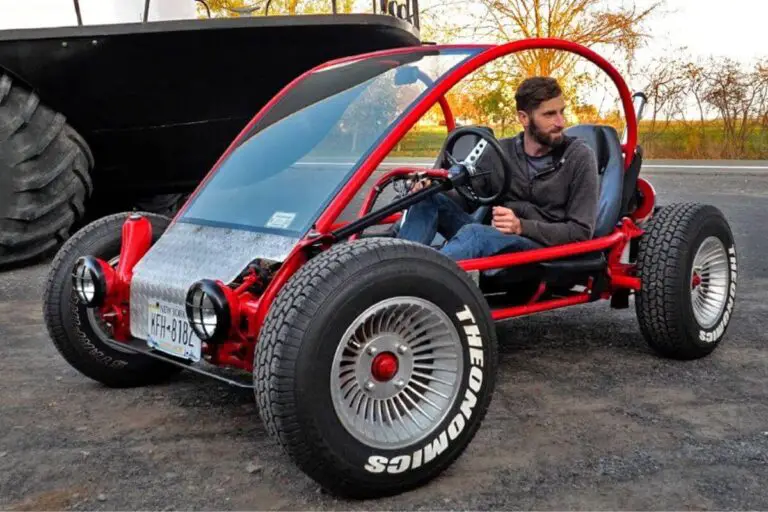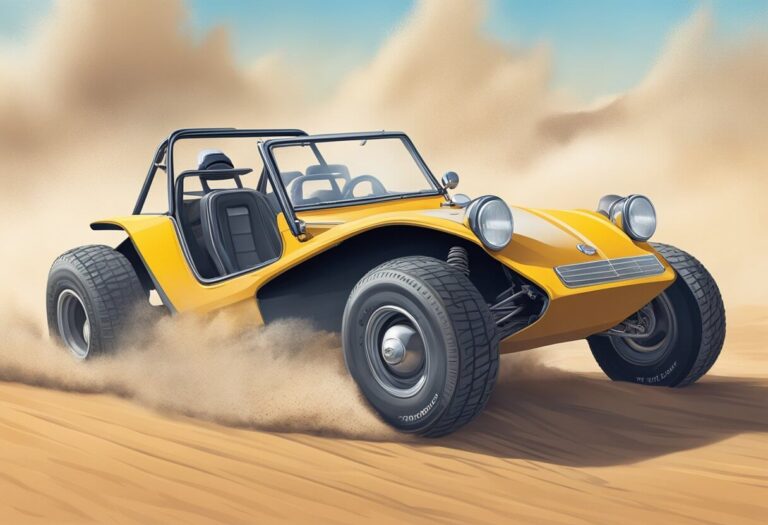VW Beetle Dune Buggy: What you need to know?
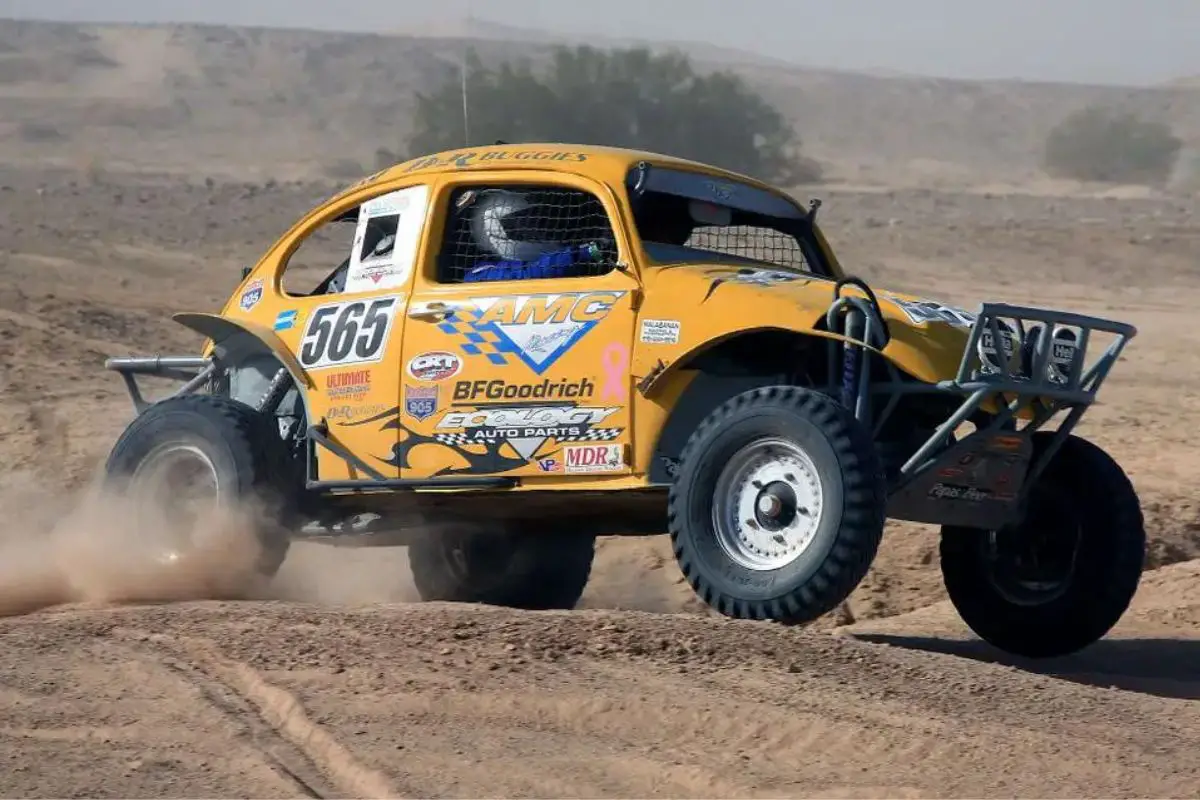
The Volkswagen Beetle is one of the most iconic cars ever made. Produced from 1938 to 2003, this distinctive rear-engined economy car earned the nickname “bug” and became an emblem of mobility and freedom. Through the decades, the Beetle developed a cult following and became a favorite platform for customization. Out of this tinkering culture came the rise of VW-based dune buggies – lightweight, open-topped off-road vehicles inspired by California beach life.
Now, Volkswagen has reimagined the classic Beetle as a modern dune buggy with the VW Beetle Dune concept. This rugged and retro ride has the potential to inspire a new generation of drivers to get creative with the venerable Bug. But how did this custom car culture begin? What makes the Beetle such an ideal foundation for off-road fun? And could VW’s vision make it into production?
In this post, we’ll explore the origins of dune buggies, take a close look at the Beetle Dune concept, and consider the possibility of new life for the classic VW Bug.
A Brief History of the Volkswagen Beetle
The Volkswagen Type 1, commonly called the Beetle, Käfer, or Bug has an illustrious history stretching back before WWII. Designed in Germany during the 1930s, the curvy and unconventional rear-engined economy car was meant to bring mobility to the masses.
Production and Popularity
Production officially began in 1938 at the Volkswagen factory in Wolfsburg. It wasn’t until 1945, when the British took over the plant, that the Beetle was widely mass-produced. By 1955, over 1 million had been manufactured. The Beetle first came to America in 1950 and proved immensely popular, selling over 21 million units in the US.
The distinctive rounded shape, rear-mounted air-cooled engine, and affordable price tag made the Beetle an automotive icon. By surpassing the Ford Model T production record, it became the longest-running and most-manufactured car of a single platform.
Customization Culture
The Beetle’s popularity spurred an entire subculture dedicated to customizing VWs. Owning a Beetle meant you could tinker with it easily, swapping engines and modifying the chassis. This ignited a trend that continues today with VW tuning and aftermarket parts.
Decline and End of Production
By the 2000s, interest in the antiquated Beetle design had declined in favor of modern hatchbacks and sedans. Production finally ceased in 2003, 65 years after the first car rolled off the line. Over 21.5 million original Beetles had been produced worldwide.
Revival with the New Beetle
But the Beetle’s story wasn’t over. In 1998, Volkswagen revived the model with the New Beetle – a modern interpretation of the classic available as a coupe or convertible. This front-wheel drive water-cooled car recaptured some of the old Beetle’s charm and was a hit initially, but failed to sustain interest long-term.
Legacy
However, the original rear-engined Beetles are still cherished by collectors and modified by an enthusiastic community of drivers. The vintage Bug remains popular as the platform for dune buggy creations to this day.
Introducing the VW Beetle Dune Concept
At the 2014 Detroit Auto Show, Volkswagen unveiled the Beetle Dune – a rugged, off-road inspired version of the modern Beetle. This bright yellow concept buggy was a fresh take on the classic dune buggies VW enthusiasts had been building since the ’60s.
The Beetle Dune was conceived to evoke the spirit of California’s beach lifestyle. It featured a raised suspension with more ground clearance, unique wheels, and chunky fender flares. The body was finished in a sandstorm yellow paint job with matte black accents reminiscent of sand and surf.
Unlike old-school dune buggies which sacrificed comforts to maximize lightweight capability, the Beetle Dune concept retained a fully-trimmed interior. Details like sport seats, yellow accents, premium Fender audio and the latest Volkswagen touchscreen tech gave it a modern edge.
But the most intriguing aspect of this concept was the idea of VW themselves producing a road-legal, Beetle-based fun buggy straight from the factory. The New Beetle had lost its luster, so perhaps tapping into the dune buggy aftermarket was a way to reconnect with the original model’s customization culture.
The Beetle Dune concept generated plenty of buzz and seemed like an exciting reboot. But this bright idea has yet to materialize as an actual production model. The question remains – could VW make this a reality? And would it capture the same adventurous spirit that birthed the original dune buggies?
Volkswagen Beetle Dune Buggy – Specifications
| Specification | Details |
|---|---|
| Body Style | Hatchback/Dune Buggy |
| Engine | Turbocharged and intercooled DOHC 16-valve inline-4 |
| Transmission | 6-speed automatic with manual shifting mode |
| Drive Type | Front-wheel drive |
| Horsepower | 170 hp at 4800 rpm |
| Torque | 184 lb-ft at 1500 rpm |
| 0-60 mph | ~15.6 seconds |
| Top Speed | Est. 110 mph |
| Fuel Economy | TBD |
| Weight | 3042 – 3316 lbs |
| Seating Capacity | 4 seats |
| Ground Clearance | 7 inches |
| Wheelbase | 100 in |
| Overall Length | 168.74 in |
| Overall Width | 71.73 in |
| Overall Height | 59.13 in |
| Cargo Volume | 15 cu ft (est) |
| Wheels | 19-inch alloy |
| Tires | 235/45 all-season |
Dune Buggy Basics: Mechanics and Design
Before diving into the Beetle Dune, it helps to understand what defines a dune buggy. These lightweight recreational vehicles were originally designed for racing or riding across sand dunes and beaches. They evolved from modified street cars in the 1960s, especially in Southern California beach towns.
VW Beetles were the favorite starting point for DIY dune buggy builders thanks to the rear-mounted air-cooled engine and easily modified chassis. By removing heavy body parts and adding oversized tires on a raised suspension, Beetles could be transformed into quick and nimble off-road machines.
Typical dune buggy features include:
- Exposed tubular steel frame chassis with no bodywork
- Large diameter wheels with balloon tires for traction and suspension
- Modified suspension lifted high enough to clear obstacles
- Open design with low doors or no doors at all
- Front-mounted engine for better weight distribution
- Roll bars for reinforcement and occupant protection
Some key factors distinguish street-legal dune buggies from pure racing models:
- Wider stance and wheelbase for stability
- More ground clearance – at least 10 inches
- Retains functioning lighting and safety equipment
- Must have seatbelts, horn, mirrors, etc. to pass inspection
- Brakes upgraded to handle the increased weight
VW Beetles remain a top choice for build-it-yourself dune buggies thanks to abundant parts and knowledge. But other popular options include old school 4x4s like Jeep CJs or early Ford Broncos. Many companies sell dune buggy kits you can bolt onto an existing chassis too.
Building Your Own VW-Based Dune Buggy
For many, the appeal of owning a dune buggy is the process of actually building and modifying it yourself. Making something uniquely your own through customization satisfies a craving for personalization.
The quintessential kit for transforming a Beetle into a dune buggy is the Meyers Manx. This classic design patented in 1964 by Bruce Meyers revolutionized DIY buggies. The iconic Meyers Manx, with its rounded hood and cut-down Beetle chassis, inspired countless replicas.
To build a Meyers-style buggy or any VW-based ride, you’ll need:
A suitable Beetle donor car – Many choose a later ’60s or early ’70s model for their more robust chassis, suspension and engine improvements. Must be rear-engined, not the New Beetle.
Chassis modification kit – Shortens wheelbase and removes body. Can be custom fabricated or use a kit like Meyers.
Suspension lift – Raised at least 10 inches for ground clearance. Requires extended shocks and drive shafts.
Wheels and tires – 10 to 12-inch wide rims allow fitting oversized tires up to 35 inches tall.
Body fabrication – Can be shaped from scratch, fiberglass or modified from the Beetle shell. Depends on look.
Engine upgrades – Basic mods like carb, exhaust, etc. Can swap in a larger motor for more power.
Interior choices – Full custom or minimalist. At least seats, roll bar and driver controls are required.
Additional parts – Brakes, driveline, lights, fuel tank. Must be functional and road legal.
A capable DIY mechanic with fabrication skills can likely complete a buggy build for around $5000 in parts. The donor Beetle and any engine upgrades vary based on options. Take time to research and source the right components before starting your ideal build.
The Volkswagen Beetle Dune’s Specs And Capabilities
As a concept car, Volkswagen took some liberties with the Beetle Dune’s proportions and specifications. But examining the planned components provides insight into VW’s vision for a reborn dune buggy.
The Dune would have retained the standard front-wheel drive powertrain used in the 2012+ Beetle. This means its heart is a turbocharged 1.8-liter four-cylinder providing 170 horsepower and 184 lb-ft of torque. Power routes through either a 6-speed manual or 6-speed dual-clutch automatic transmission.
Despite its dune buggy appearance, the Dune concept wasn’t engineered for hardcore off-roading. Still, its stats indicate improved ability versus a standard Beetle:
- Suspension – Raised .5 inches with adjustable shocks
- Ground clearance – Increased 2 inches to a total of 7 inches
- 19-inch wheels with 235/45 all-season tires
- Revised steering calibration for stability
- Underbody protection plate for off-road resilience
Performance wasn’t a huge focus, but the concept reportedly hit 60 mph in a respectable 15.6 seconds with the manual transmission. Overall, the combination of modest ground clearance, all-wheel drive and off-road oriented tires would expand where this Beetle could go beyond just pavement.
Inside, VW incorporated modern amenities expected in current models:
- Heated sport seats with yellow stitching and accents
- Leather-wrapped steering wheel
- 6.3-inch touchscreen display and media hub
- Fender premium audio system – 10 speakers plus subwoofer
- Bluetooth and smartphone integration
- Automatic climate control
- Ambient cabin lighting
These details demonstrated how VW planned to balance the Dune’s old-school cool exterior with the comfort and tech features drivers expect today. It’s a blend of nostalgia and innovation.
The Beetle Dune’s Unique Exterior Styling
The most striking aspect of the Beetle Dune concept is its radically changed exterior. The Dune takes inspiration from Baja bugs and classic dune buggies but executes the look in VW’s contemporary styling language.
Up front, the Beetle’s front bumper and fenders were replaced with flared wheel arches. A silver front skid plate hints at off-road intentions. The front grille design is enlarged and more vertical for a pronounced appearance.
In profile view, the Dune immediately stands apart from a normal Beetle thanks to its lifted suspension. Black plastic cladding surrounds the wheel wells and side sills to emphasize the increased ride height. Optional auxiliary lights provide functional illumination.
Distinctive wheels measure 19 inches in diameter, with five sets of spokes twisting out from the center hub. The rugged design complements the masculine Dune vibe. A roof rack with auxiliary lights is available to enhance the adventurous look.
The Dune’s rear end receives similar flared fenders and bumper treatment as the front. A contrasting diffuser panel was added along with dual chrome exhaust tips. Taillights are tinted for distinction from regular Beetle models.
Finally, the exterior color defines this concept’s personality. The flashy Sandstorm Yellow hue ties directly to the Baja bug connection. For production, VW suggested offering multiple colors with desert-themes names, like Dune Brown, Desert Green and Panorama Blue.
VW Beetle Dune vs Other Modern Dune Buggies
The novelty of the Beetle Dune concept was the idea of an automaker officially producing a street-legal dune buggy variant straight from the factory. But how would VW’s vision stack up against existing DIY buggies and aftermarket kits?
For instance, Florida-based company A-Team Racing makes bolt-on fiberglass bodies to convert VW Beetles into Baja bugs or road-ready dune buggies. The finished product looks just as rad as the Dune concept thanks to huge knobby tires, exposed suspension, light rack, push bar and custom paint. You supply the Beetle platform.
Or take the Meyers Manx successor – the Meyers Manx 2.0. This faithful modern reimagining of Bruce Meyer’s classic 1960s dune buggy is an authorized kit you install on a Beetle chassis. It delivers authentic old-school style with modern amenities. However, you must seek out a VW donor car and put in engine work.
The appeal of VW doing the work for you is clear. Similar off-road-esque Beetle packages have existed over the years, like the Dune concept. In 2000, VW sold a New Beetle “Big Bug” variant with a suspension lift and unique wheels, but no wide fenders.
Perhaps what draws many to the Beetle Dune is how its design modifications appear perfectly integrated rather than tacked on. And there’s undeniable nostalgic charm in an iconic Buggy brought to life by VW themselves.
Pros and Cons of the VW Beetle Dune
Pros:
- “I love the rugged look and lifted stance of the Dune concept. It reminds me of the old school Baja bugs.”
- Nostalgic styling brings back the classic Beetle spirit
- Increased ground clearance and off-road capabilities
- Premium interior features and technology
- Turbocharged engine provides decent performance
Cons:
- “The Beetle Dune seems cool, but I worry about reliability and repairs given VW’s spotty reputation.”
- Uncertain if concept would make production
- Base Beetle platform not designed for serious off-roading
- Compromised rear cargo space due to spare tire mount
- High maintenance costs associated with VW models
Volkswagen Beetle Dune Buggy – Pricing
Since the Beetle Dune was never produced, exact pricing details were never released. However, we can estimate a hypothetical starting price based on the existing Beetle models:
- The 2012 Beetle 2.5L started at around $20,000 USD
- Additional fees for convertible top, automatic transmission, etc.
- Extensive design changes would increase cost over base model
Estimated Base Price: $14,500 – $25,000 USD
Pricing could vary depending on trim level. Adding options like technology packages or more premium wheels and audio would also raise the price. Overall, the Dune would likely cost a few thousand more than an equivalent stock Beetle model.
The Future of the Volkswagen Beetle Dune
The Beetle Dune was conceived as a concept car back in 2014 with no confirmed production plans. However, rumors and hints from VW suggest the rugged Beetle could still become a reality someday.
In 2016, VW patented the Beetle Dune name with intentions of using it if manufacturing goes ahead. The overall positive response to the manly Beetle variation likely convinced executives to keep the door open.
VW also teased a near-production model in 2018 called the Beetle Custom, sold only in Mexico. With its raised ride height, flared arches and extra cladding, it provided a template of what a street-ready Dune edition could look like.
But VW recently ceased all Beetle production in 2019 after two generations of the modern front-wheel drive New Beetle. This casts uncertainty over prospects for a Dune variant.
However, VW may see potential in reviving the concept as a farewell tribute to the Beetle’s rich history and cultural impact. The company is shifting focus towards EVs and crossover SUVs, so a low-volume Dune special model would attract interest from Beetle enthusiasts.
Given the challenging emissions regulations and Rapidly changing auto industry, a niche off-road Beetle derivative seems unlikely to return. But with VW, you can never say never. If customer passion remains strong, the Dune could rise again some day.
Resources for Building Your Own VW Dune Buggy
If VW’s vision inspired you but waiting isn’t an option, take matters into your own hands. Building a dune buggy or Baja bug clone from a Beetle is totally possible with some mechanical skill. Here are top resources:
Donor VW Beetles – Search marketplaces like Craigslist, Facebook or specialist sites for fixable donor cars. Focus on ’60s and ’70s models with solid chassis or engines to swap.
Parts suppliers – Off Road Warehouse, JBugs, CB Performance for suspension lift kits, wheels/tires, engine components and anything else needed in a build.
Body kits – Replace the Beetle shell with a new look like the classic Meyers Manx from Meyers Manx USA or fiberglass kits from A-Team Racing.
Tutorials – Dune buggy forum and build guides provide tips for chassis modification, roll cages, best upgrades for horsepower or handling, and more.
Local dune buggy builders – Find shops experienced with VWs through clubs or directories who can help source rare parts and provide fabrication.
VW Beetle-based dune buggies will always have an eager fanbase. And the Beetle Dune concept proves VW hasn’t forgotten the fun-loving spirit of the original Bugs. Whether the idea materializes or remains a “what if”, this wild Beetle mashup gave us a thrill ride back through dune buggy history.
What are your thoughts on VW’s modern take on the Baja bug? Should VW greenlight the Beetle Dune for production? Have you built or driven a custom VW yourself? Share your experiences and let’s keep the spirit of dune buggies cruising far into the future.

